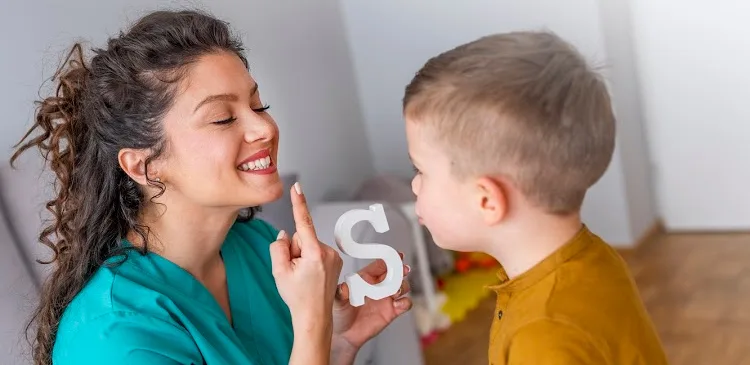Unlocking Communication: A Holistic Approach to Addressing Speech Defects in Autistic Individuals with Coexisting ADHD

Unlocking Communication: A Holistic Approach to Addressing Speech Defects in Autistic Individuals with Coexisting ADHD
Communication is a fundamental human experience that connects us to the world around us. However, for autistic individuals with coexisting ADHD, speech defects can create barriers to effective interaction.
Understanding the intricate relationship between their challenges and the brain, and tailoring interventions to address their unique needs, is paramount. In this blog post, we delve into the factors contributing to speech defects in autistic children, explore holistic interventions that extend beyond speech therapy, and discover the role of Ayurveda in nurturing speech production.
The Neurological Landscape: Why Autistic Children Experience Speech Defects
Autism is a neurological condition characterised by differences in social interaction, communication, and behaviour. Within the intricate neural pathways of the brain, areas responsible for language processing and communication may develop atypically in autistic individuals.
Connectivity between these regions can be disrupted, resulting in difficulties coordinating speech sounds, processing language, and engaging in reciprocal communication.
The Power of Customised Interventions
Customised interventions are the cornerstone of empowering autistic individuals with coexisting ADHD to overcome speech defects. Speech therapists, in collaboration with a multidisciplinary team, craft personalised strategies that encompass various therapeutic approaches.
- Speech Stimulations: Speech therapists employ a range of techniques, such as articulation exercises, language-building activities, and visual aids, to stimulate speech production. These strategies help develop phonological awareness and foster effective communication.
- Behavioral Therapy Integration: Combining speech therapy with behavioural interventions addresses ADHD-related challenges. Behavioural therapists guide the development of strategies to manage impulsivity, enhance focus, and promote positive communication behaviours.
- Music Therapy: Engaging the brain through music can enhance auditory processing, rhythm, and language development. Music therapists design interventions that harmonise with speech therapy, promoting vocalisation and language comprehension.
- Sensory Integration: Occupational therapists contribute by integrating sensory activities. Sensory integration therapy helps regulate sensory experiences, potentially reducing anxiety and improving the ability to engage in meaningful communication.
- Ayurvedic Principles: Ayurveda, an ancient holistic healing system, offers unique insights into speech production. Treatments like “nasyam” and “orofacial massage” clear energy channels, creating a foundation for improved clarity of thought and speech.
Planning Holistic Interventions: A Blueprint for Success
- Expert Assessment: Collaborate with speech therapists, behavioural therapists, occupational therapists, and Ayurvedic practitioners for comprehensive evaluations.
- Goal Setting: Define achievable goals in communication, social interaction, and behaviour. Tailor goals to individual strengths and challenges.
- Tailored Strategies: Customise interventions that integrate speech therapy techniques, behavioural strategies, music therapy, and sensory integration activities.
- Multidisciplinary Collaboration: Regularly convene meetings with the entire healthcare team to discuss progress, share insights, and ensure a unified approach.
- Family Involvement: Equip families and caregivers with training to extend interventions into daily life, reinforcing progress.
- Progress Monitoring and Adjustment: Continuously assess progress, making necessary adjustments to intervention plans based on outcomes.
Ayurveda’s Role in Nurturing Speech Production
Ayurvedic treatments like “nasyam” and “orofacial massage” can enhance speech clarity by harmonising energy channels and promoting mental clarity. Integrating Ayurveda complements conventional therapies, offering a holistic perspective on speech production.
In simple terms, helping people with both autism and coexisting ADHD communicate better involves a mix of different methods. These methods, like speech therapy, behavioural therapy, music therapy, sensory integration, and Ayurveda,
work together to create a well-rounded solution. Jeevaniyam Ayurveda, in particular, brings all these approaches under one roof, focusing on overall well-being and clear expression.
This collaboration leads to a powerful journey where obstacles fade away, making space for clear thoughts and feelings to be spoken. By combining these therapies and knowledge, a unique voice emerges, revealing the real essence of each person.
Through this combination of healing approaches, communication gets better, connections grow stronger, and every aspect of human expression shines brightly.

